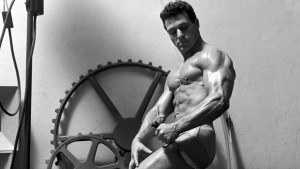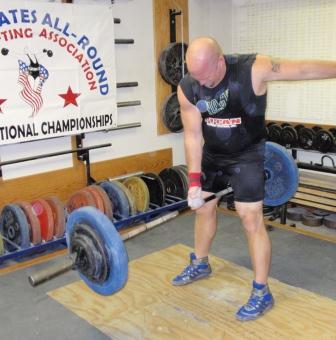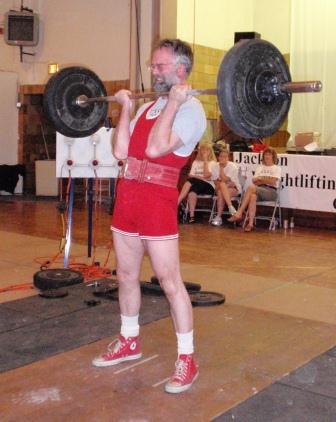BRUNCH AND LINNER
By John McKean

The late, great Jack LaLanne, truly an all-round lifter& athlete if there ever was one, discovered a very similar nutrition approach that he once wrote greatly improved his training energy and recuperation!
Ole pal, Chris Waterman, always the consummate USAWA competitor, was carefully concentrating through set after set in his usual perfect form. I finally had to remind him, tongue-in-cheek, that this was a National Championship, not a mere WORKOUT; of course, from our long time friendship throughout many of these big All-Round events, there just HAD to be some spirited razzing involved! Such as, he was working harder before first attempts on the official lifting platform than I train all week long at home! Or that suggesting, since this was his “comeback” meet after his being absent from competition for years, that maybe he shouldn’t make up for missed training all in one morning! Yes, I was greeted by good natured Chris’ chuckle & friendly smile as he recalled meets from the 90s, to inspire his very accurate account, “Yeah, yeah, I remember – you guys from Ambridge never warm up at all!!”
Truth was, at this 2017 Nationals, I had to hide the fact that, by golly, I just didn’t have any ENERGY to warmup!! Months of low calorie dieting to get down to 154 pounds bwt, left only a little hope that official attempts, even relatively light, would have the muster to go up at all! Naturally, I did feel better at the reduced weight, but sure “ran out of gas” when approaching some of the record poundage lifts I’d planned.
Now, I wanted to maintain trimness following the contest, but wished to search for a better eating plan that would go well with all-round’s intensive style of training. Surprisingly, I discovered a very detailed, scientific (yet interesting) approach to nutrition about 2 weeks later. I’ve been using the easily implemented plan ever since, and never have those low cal diet cravings that often haunted me as wife Marilyn baked her famous brownies, banana bread, and cookies!! In fact, at times on my new program I’ve felt overstuffed from a few meals, while my training energy is reaching new heights! Yet I’m still LOSING even a few more pounds!
The book I refer to is Dr. Michael VanDerschelden’s ” The Scientific Approach To Intermittent Fasting.” But, wait, don’t panic, this concept is NOT one of food deprivation at all, but rather one of eating two very good, solid meals per day, using about 16 hours (mostly overnight) between these hearty feedings! That “intermittent” time period is the “fasting” part, with main meals of your own choosing, selecting between a majority of proteins and fats. Steaks, eggs, nuts, fish, and chicken are all fair game; this author’s “diet” does not consist of suffering through endless carrot sticks nor tasteless salads. Basically, just skip breakfast! Or as I like to employ for my two meals – make it BRUNCH (9-11AM) and LINNER (3-5 PM). Just go with water, coffee, or tea for the 16 hours in between.
The mind blowing factor of Dr. Mike’s eating plan is the book’s extensive display of scientific studies to show its benefits. Such as a significant PROVEN reduction in fat tissue mass, blood pressure, and heart rate. Sound sleep, mental clarity, and training energy is greatly enhanced! To me, and probably all USAWA lifters with our beloved drug free approach, the doc shows conclusive evidence that his eating plan, according to the American College of Cardiology, will provide a NATURAL increase of human growth hormone in men by an astounding 2000%!! To me, if little else is provided (though 12 chapters and 280 pages shows MUCH more benefit!) this new HGH “supplementation” will encourage me to eat nothing other than “Brunch and Linner”!
Be sure to check out Dr. VanDershchelden’s book on Amazon or your local bookseller – you’ll enjoy his easygoing, interesting style of writing and the many documented facts. And actually LEARN what effect various nutrition patterns have toward intensive weight training (the author actually states the case for short, high intensity workouts instead of long aerobic procedures). Heck, I’m finding this easy-to-implement way of eating is working superbly for an “early middle ager” like me (well, maybe not the increased mental clarity part!); just maybe I’ll actually join a “kid” like Chris Waterman on the warmup platform next year!!

